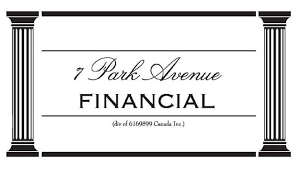|
Working Capital Loan Financing Transforms Business Challenges
Working Capital Loan Solutions That Eliminate Cash Flow Gaps
YOUR COMPANY IS LOOKING FOR CANADIAN LOANS FOR WORKING CAPITAL FINANCING!
You've arrived at the right address! Welcome to 7 Park Avenue Financial
Financing & Cash flow are the biggest issues facing businesses today
ARE YOU UNAWARE OR DISSATISFIED WITH YOUR CURRENT BUSINESS FINANCING OPTIONS?
CALL NOW - DIRECT LINE - 416 319 5769 - Let's talk or arrange a meeting to discuss your needs
EMAIL - sprokop7parkavenuefinancial.com

ACCESSING THE RIGHT BUSINESS LOANS IN CANADA
Business Financing in Canada, including working capital loans and debt finance solutions, comes with many do's and don'ts for small business owners in Canada, aka the SME sector!
Cash Flow Crunch: How Working Capital Loans Unlock Business Potential
Running a Canadian business requires consistent cash flow, yet seasonal cycles, slow-paying clients, and unexpected expenses frequently create financial gaps. These shortfalls can paralyze operations, forcing difficult choices between paying employees, restocking inventory, or pursuing growth opportunities.
Let the 7 Park Avenue Financial team show you how Working capital loans bridge these critical gaps, providing timely funding that maintains business momentum while positioning you for sustainable success.
EVALUATING THE BEST BUSINESS FINANCE SOLUTIONS
We've been doing some fact-checking (which seems to be happening a lot these days!), so let's dig in.
Most small business owners and their financial managers recognize that searching for capital and funding for their businesses is never-ending.
Two key facts emerge :
1. Working capital needs are both short-term and long-term - It's key to know which one (or both?) your company needs - business credit cards aren't the best way to finance a business! But which financial institution or commercial finance firm can serve your needs?
2. Once your company has determined the type of working capital or debt it needs, what are its options, and how can it pursue those successfully and in the least amount of time?
BEST WORKING CAPITAL LOANS?
We've stated that working capital is both a short-term and a long-term need. Let's examine that key point.
When we talk to clients about working capital needs, it becomes apparent that they are often confused by 'textbook issues' as opposed to real-world issues.
The textbook tells us that working capital is a simple calculation - go to your balance sheet, subtract current liabilities from current assets, and voila! There's your working capital. The perfect answer, right?
The reality is that business owners must consider two key elements not often covered in the textbook.
They need to know their cash flow needs based on past issues and current and future needs.
Also, the turnover of current assets is critical, and many Canadian business owners and financial managers don't know how to measure turnover. If accounts receivable and inventory aren't turning properly, your working capital will feel 'sluggish'!
And if those two assets are building up, not about sales, that's a bigger problem.
As we have stated, we're talking about short-term needs vs. long-term needs. You may have historically had enough cash flow for working capital to satisfy your overall sales growth needs.
But what if you have a large new order or contract you need to fulfill? That often necessitates a short-term need for cash flow to fulfill purchase orders, contracts, etc.
The good news is that with the right help and knowledge, measuring cash flow needs is relatively simple. Don't forget, though, that sales and profits rarely relate perfectly to cash flow! When that issue becomes painfully obvious, it's too late to implement the proper fix.
UNDERSTANDING WORKING CAPITAL LOANS
Two options are available for your firm when considering a working capital solution.
One option is to take on more debt and enter into a working capital term loan—this is simply a cash term loan with a fixed repayment and term—typically three to five years.
Interest rates are dependent on overall credit quality - short term working capital loans have emerged in Canada as an offshoot of merchant advance loans -
These short-term loans, which online lenders sometimes offer, tend to be under 200k and are approved based on sales volumes and the business owner's personal credit history. It's a short-term working capital line of credit.
For larger firms, this might be called subordinated debt or mezzanine financing, but for smaller and medium-sized companies in Canada, we can simply say, 'It's a working capital loan'!
This type of financing provides permanent working capital for your business and allows you to feel comfortable meeting short-term obligations such as lease payments. If there is a disadvantage to this type of financing, it's simply that, in reality, you are adding more debt to the balance sheet, as the working capital loan is debt.
You can also monetize existing assets to maximize cash flow.
Typically, these assets are A/R, inventory, and fixed assets. Yes, you are leveraging those assets, but the reality is that your balance sheet ratios stay intact. Capital expenditures of long-term assets are best financed through the lease financing of long-term assets,
For smaller and medium-sized firms in Canada, these solutions come under several names:
Working capital facilities / Merchant cash advances
Asset-based business lines of credit for maximum loan amount leverage
Standard operating line of credit with a Canadian chartered bank that allows you to margin sales and invoice financing of receivables and inventory via unsecured loans and lines of credit.
Companies that employ factoring finance solutions can access cash from their sales revenues in one business day, adding valuable cash flow to their everyday operations - For example: pay wages / everday expenses.
ARE GOVERNMENT-GUARANTEED LOANS THE RIGHT SOLUTION FOR YOUR BUSINESS
Thousands of businesses in Canada annually take advantage of the Canada Small Business Financing Program, aka ' government-guaranteed loans ' similar to those offered in the U.S. by the Small Business Administration.
These are not cash flow/working capital loans, but they are a solid solution to preserve and provide working capital by financing equipment, leasehold improvements, and even commercial real estate. Talk to the 7 Park Avenue Financial team about the application process and the interest rate benefits.
One key program requirement is a good personal credit score, and loans are structured as term loans.
Most financial institutions, such as Canadian banks and credit unions, participate in government small business loans, and Industry Canada sponsors the program.
Case Study:
A Halifax-based retailer of boating equipment faced a critical challenge when its busiest season approached. With inventory depleted after winter and suppliers requiring upfront payment, it lacked the $75,000 needed to stock adequately for summer demand.
After securing a working capital loan with a 9-month term, the company purchased inventory at volume discounts, saving approximately 12% on wholesale costs. The additional stock allowed them to increase sales by 34% compared to the previous summer season, generating sufficient revenue to repay the loan three weeks early while maintaining healthy cash reserves.
"The working capital financing created a virtuous cycle," said the owner. "Better inventory selection attracted more customers, increased our average transaction value, and improved our supplier relationships. The additional profit and customer retention benefits significantly outweighed the loan cost."
Within 18 months, the company had established sufficient cash reserves to self-fund inventory purchases, though they maintain a working capital line for unexpected opportunities.
SOME TYPICAL USE CASES FOR WORKING CAPITAL LOANS
-
A restaurant supplier needs to purchase additional inventory before the summer tourist season begins in Toronto but hasn't collected on outstanding invoices from winter clients.
-
A manufacturing company faces unexpected machinery repairs that would halt production for weeks unless immediately addressed, while their largest client payment is still 45 days from receipt.
-
A clothing retailer must place holiday inventory orders in August, requiring significant capital outlay months before the December sales peak will generate returns.
-
A technology consulting firm wins a large government contract but needs to hire additional staff immediately while government payment terms extend to 60-90 days.
-
A construction company requires materials and labor payments for the first phase of a project, but the client's first progress payment won't be received until 25% completion.
-
A growing e-commerce business experiences a sudden spike in orders after influencer promotion but lacks the capital to purchase enough inventory to fulfill the unexpected demand.
-
A transportation company needs to upgrade equipment to meet new environmental regulations before the compliance deadline but is still recovering financially from recent slow months.
-
A professional services firm must cover increased payroll and office expenses after expanding to a new location, with revenue from the new office not expected for 4-6 months.
-
A food manufacturer receives an opportunity to supply a major grocery chain but needs specialized packaging equipment immediately to meet the retailer's requirements.
-
A technology startup needs to bridge the gap between development completion and their next funding round, requiring working capital to support operations for three months.
KEY TAKEAWAYS
- Working capital loans specifically address short-term operational funding needs rather than long-term capital investments, making them ideal for covering payroll, inventory, or unexpected expenses.
- Lenders evaluate cash conversion cycles to determine risk levels when approving working capital applications, focusing heavily on accounts receivable aging and inventory turnover rates.
- Different industries require varying working capital structures, with retail businesses typically needing more inventory-heavy financing than service-based companies requiring payroll-focused solutions.
- Working capital facilities that flex with revenue patterns benefit seasonal businesses tremendously. These facilities prevent cash shortages during slow periods and enable preparation for busy seasons.
- Maintaining strong business credit improves approval chances and interest rates for working capital financing, potentially saving thousands in borrowing costs.
- Alternative working capital solutions like invoice factoring or merchant cash advances provide options when traditional loans aren't available, though typically at higher effective interest rates.
- Canadian government programs through BDC and Export Development Canada offer specialized working capital solutions with favourable terms for qualifying businesses in strategic sectors.
- Effective cash flow forecasting represents the foundation for proper working capital loan sizing, preventing under-borrowing emergencies and over-borrowing interest waste.
CONCLUSION - BENEFITS OF THE WORKING CAPITAL LOAN
In summary, we have covered the need for business owners to determine what type of working capital they need, albeit short-term or long-term, when it comes to debt payments that small business owners can handle and manage.
Companies can use a working capital loan to help cover day-to-day operational expenses while they are between periods of increased business activity.
Unsecured loans are only available to businesses with a high credit rating, while other companies must secure their loans with assets.
THE BOTTOM LINE?
Ensure you know the important do's and don'ts in business financing solutions. Do your fact-checking,
Call 7 Park Avenue Financial, a trusted, credible, and experienced Canadian business financing advisor, for financial leverage and success!
FAQ: FREQUENTLY ASKED QUESTIONS / MORE INFORMATION
CITATIONS /MORE INFORMATION
- Business Development Bank of Canada. (2023). "Working Capital Strategies for Canadian Small Businesses." BDC Small Business Research Reports, 45-62. https://www.bdc.ca
- Statistics Canada. (2023). "Financing Patterns Among Canadian SMEs." Survey on Financing and Growth of Small and Medium Enterprises. https://www.statcan.gc.ca
- Canadian Federation of Independent Business. (2024). "Cash Flow Challenges and Solutions for Small Businesses." CFIB Research Reports, 18-27. https://www.cfib-fcei.ca
- Deloitte Canada. (2023). "Working Capital Trends in Canadian Industries." Deloitte Financial Advisory Services Publication. https://www2.deloitte.com/ca
- Export Development Canada. (2024). "Working Capital Solutions for Canadian Exporters." EDC Business Resources. https://www.edc.ca

' Canadian Business Financing With The Intelligent Use Of Experience '
STAN PROKOP
7 Park Avenue Financial/Copyright/2025

ABOUT THE AUTHOR: Stan Prokop is the founder of 7 Park Avenue Financial and a recognized expert on Canadian Business Financing. Since 2004 Stan has helped hundreds of small, medium and large organizations achieve the financing they need to survive and grow. He has decades of credit and lending experience working for firms such as Hewlett Packard / Cable & Wireless / Ashland Oil
|